Apple unveiled the iPad Air 5 during its March Peek Performance event. While the new tablet shares many similarities to the iPad Air 4, it’s gotten our attention thanks to one key upgrade: the Air is now powered by Apple’s impressive M1 chip.
This invites direct comparison to the iPad Pro 2021, which was the first Apple tablet to feature the M1. And since the 11-inch iPad Pro 2021 is nearly the same size as the iPad Air 5, suddenly these two tablets are far more similar than they’ve ever been.
Both slates have the aforementioned M1 chip, along with Liquid Retina displays, 12MP rear and front cameras and 5G support. They also have similar designs and features. You won’t regret buying either tablet, but, depending on what you’re looking for, one may be better than the other.
The iPad Pro 2021 is one of our favorite slates and has earned a spot on our best tablets list. But has the iPad Air 5 rendered the iPad Pro irrelevant? Which one should you buy? This article should help you decide.
iPad Air 5 vs iPad Pro: Specs
| iPad Air 5 | 11-inch iPad Pro 2021 | |
| Starting price | $599 | $799 |
| Display | 10.9-inch (2360 x 1640) | 11 inches (2388 x 1668 pixels) |
| Processor | M1 (16-core) | M1 (16-core) |
| Storage | 64GB, 256GB | 128GB, 256GB, 512GB, 1TB, 2TB |
| Rear Cameras | 12MP Wide camera, ƒ/1.8 aperture | 12MP wide (f/1.8), 10-MP ultra-wide (f/2.4) |
| Front Cameras | 12MP Wide camera, ƒ/1.8 aperture | 12MP TrueDepth |
| Dimensions | 9.7 x 7 x 0.24 inches | 9.74 x 7.02 x 0.23 inches |
| Weight | 1.02 pounds | 1.04 pounds |
| Port | USB-C | USB-C |
| Accessories | Magic Keyboard, Apple Pencil (gen 1 & 2) | Magic Keyboard, Apple Pencil (gen 1 & 2) |
| Connectivity | Wi-Fi 6, optional 5G | Wi-Fi 6, optional 5G |
iPad Air 5 vs iPad Pro: Price
The iPad Air 5 will go on sale on March 18 with a starting price of $599 for the Wi-Fi model with 64GB of storage. There will be two $749 models – one with 64GB of storage and 5G, and another with 256GB and Wi-Fi. If you want everything, the pricey $899 model packs the upgraded 256GB of storage and 5G connectivity.
That’s just $100 more than the cheapest iPad Pro 2021, which ships with 128GB of storage for $799. For $899 (the same price as the top-of-the-line Air 5 with 5G) you can get an 11-inch Pro 2021 with 256GB of storage and Wi-Fi. The iPad Pro gets pricier from there, up to $2,099 for 2TB and Wi-Fi + Cellular.
For the sake of this price comparison, let’s look at what you get for $899: an 11-inch Wi-Fi iPad Pro 2021 with 256GB of storage, or an iPad Air 5 with 256GB of storage and 5G.
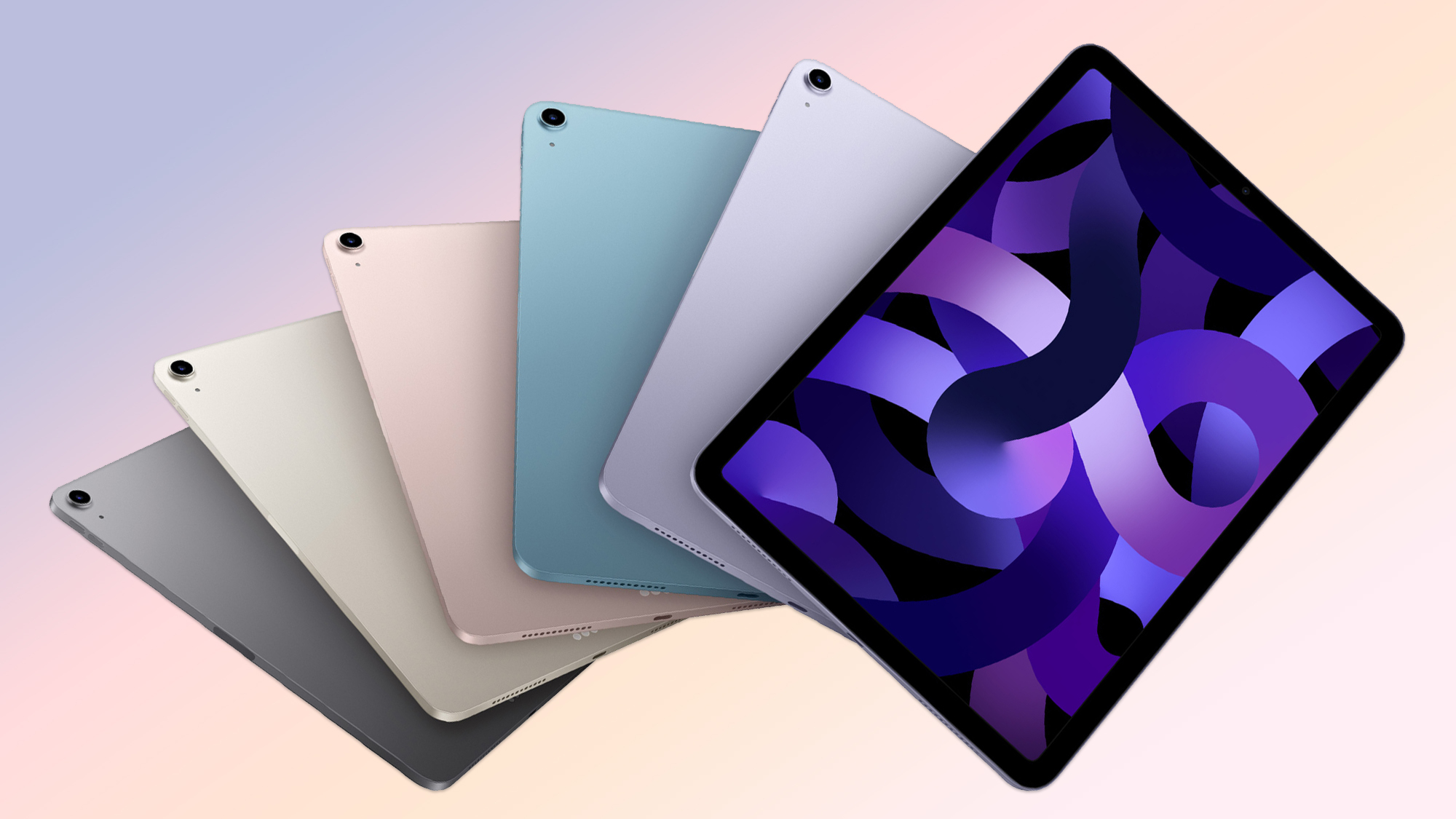
Even 128GB of space can be too little on an iPad, especially if you plan to shoot a lot of high-res photos/videos or download a lot of big games and apps. Remember, you can’t upgrade storage on an iPad after you buy it, so you’re stuck with what you’ve got — so it’s a good idea to pay for at least 256GB of storage to ensure you have plenty of space on your tablet.
So unless you absolutely need 5G connectivity on your tablet, the $749 iPad Air with Wi-Fi and 256GB seems more enticing than the $899 iPad Pro with the same options. Sticking with the default 128GB of storage does drop the iPad Pro’s price to $799, but that’s still $50 more than the iPad Air with 256GB and Wi-Fi.
iPad Air 5 vs iPad Pro: Design
The iPad Air 5 and 11-inch iPad Pro 2021 are nearly identical size-wise, as they both measure roughly 9.7 x 7 x 0.2 inches and weigh a little over a pound. The main design difference is that the iPad Pro has an 11-inch screen whereas the iPad Air 5 features a (very slightly) smaller 10.9-inch display.
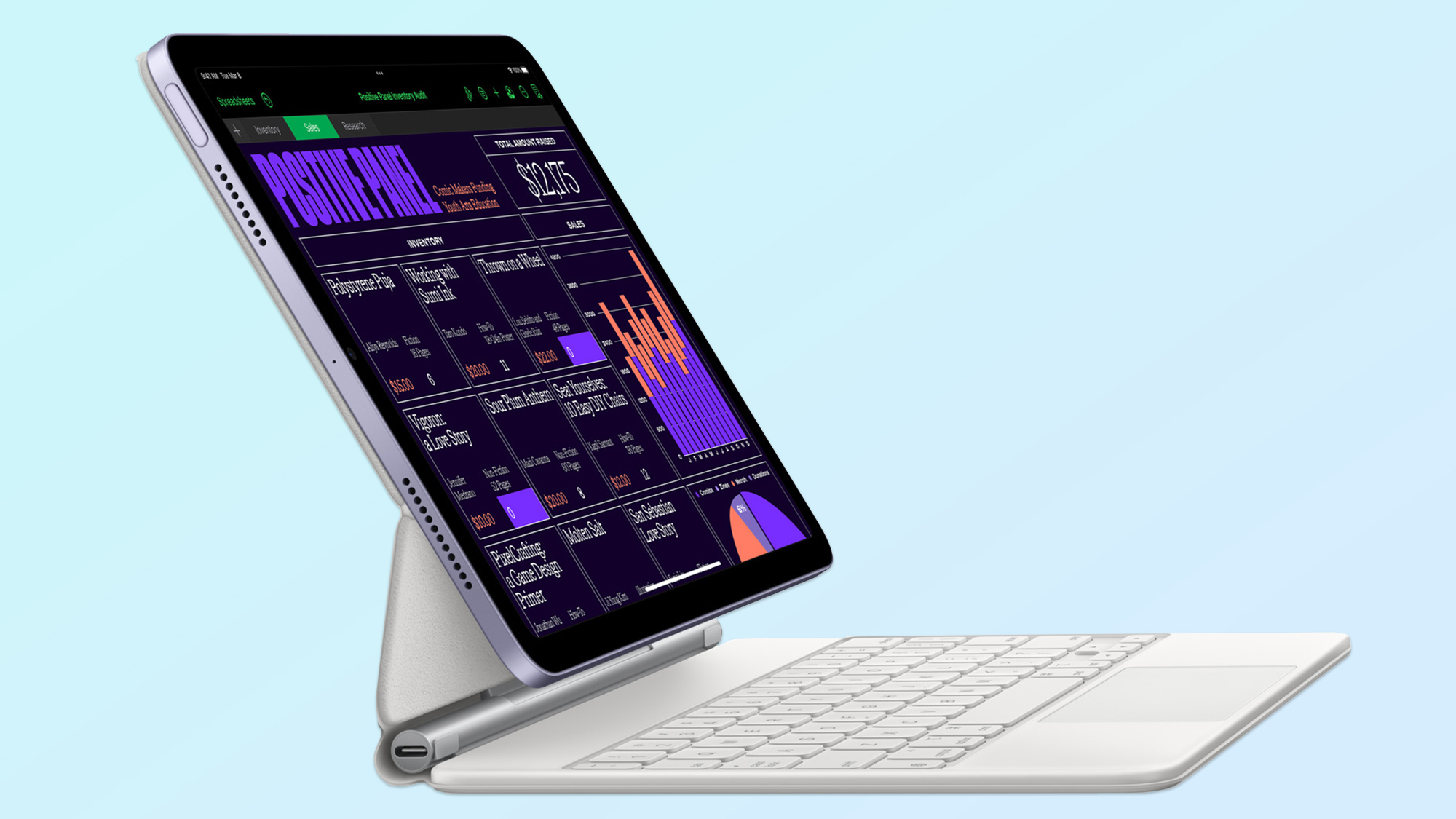
Comparing the slates’ designs is an exercise in identifying minor differences. The iPad Pro’s screen is a bit larger than the iPad Air 5, but other than that, both tablets share the same basic thin and light design. As far as physical design goes, both the iPad Air 5 and iPad Pro are winners.
iPad Air 5 vs iPad Pro: Display
Like the iPad Air 4, the new iPad Air features a 10.9-inch Liquid Retina display with 2360 x 1640 resolution. It can reach 500 nits of brightness (according to Apple), has a pixel density of 264ppi, an anti-reflective screen, True Tone and a P3 wide color gamut.
While we can’t say for sure, we expect the display on the Air 5 to be of similar quality (or better) as that of its predecessor: brilliant, sharp and colorful.
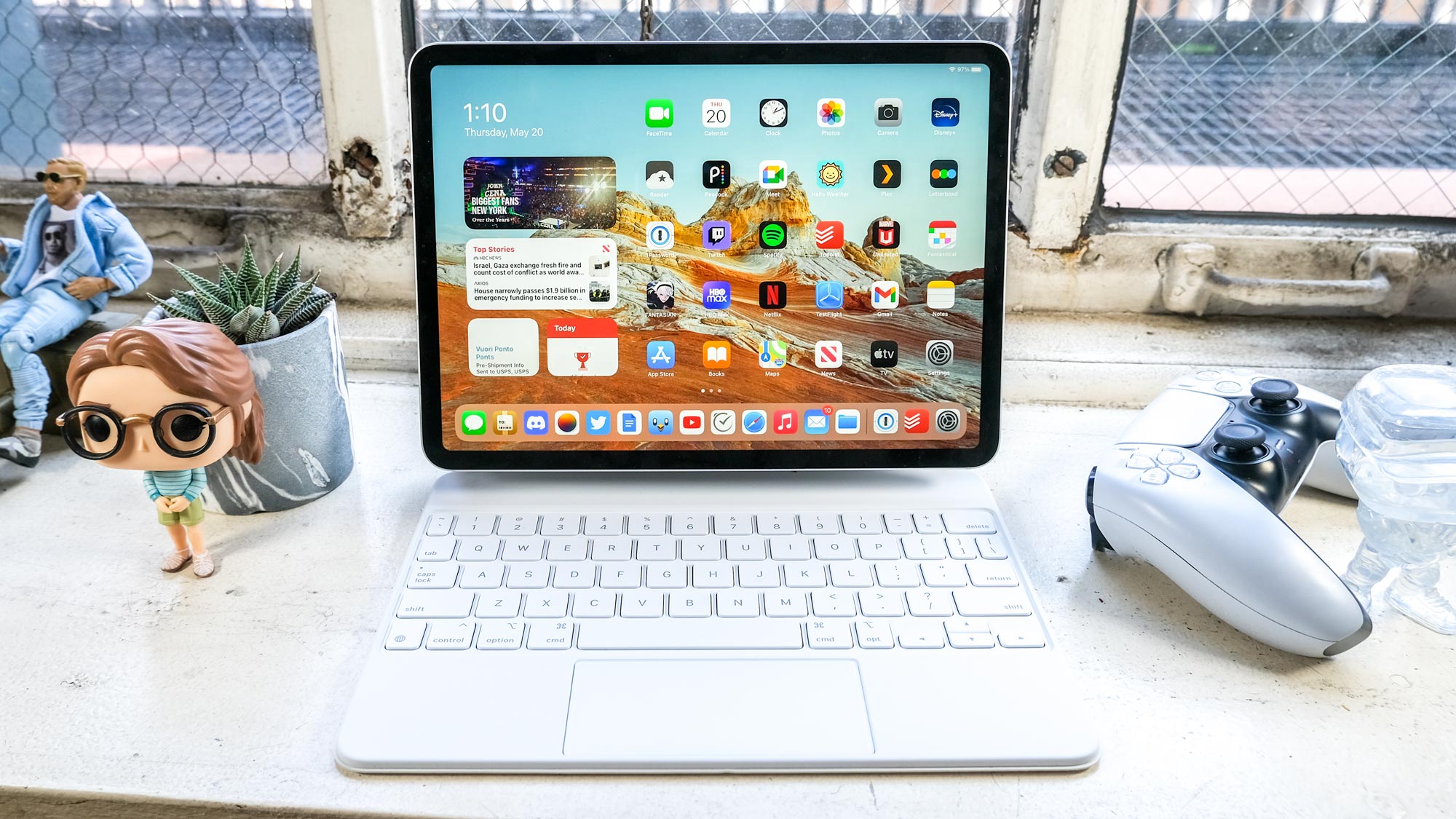
However, if that proves true then the iPad Pro will likely to continue to have the slightly better, brighter display. The 11-inch iPad Pro 2021 averaged 571.3 nits of brightness during our tests, whereas the iPad Air 4 averaged 440 nits.
The iPad Pro’s display also has a higher resolution than that on the iPad Air, though only by a smidge at 2388 x 1668. It also has a smoother 120Hz refresh rate, which is something the iPad Air (with its more pedestrian 60Hz refresh rate) lacks.
If display quality is an important factor, then the iPad Pro seems like the better choice in this category. It’s just a bit brighter, smoother and better-looking.
iPad Air 5 vs iPad Pro: Performance
Both the iPad Air 5 and iPad Pro feature Apple’s M1 chip. It’s this very fact that made us question if the iPad Pro was still relevant compared to the newer, lower-priced iPad Air 5.
Though we’ve yet to run the iPad Air 5 through our slew of performance tests, we expect it to be as capable at multitasking and creative projects as the iPad Pro. During our review, we split the screen between 13 Safari tabs and a 1080p/60fps YouTube video without incident. Even when we opened a slide-over window of the Files app to look at high-res HDR art, the iPad Pro kept chugging along nicely.
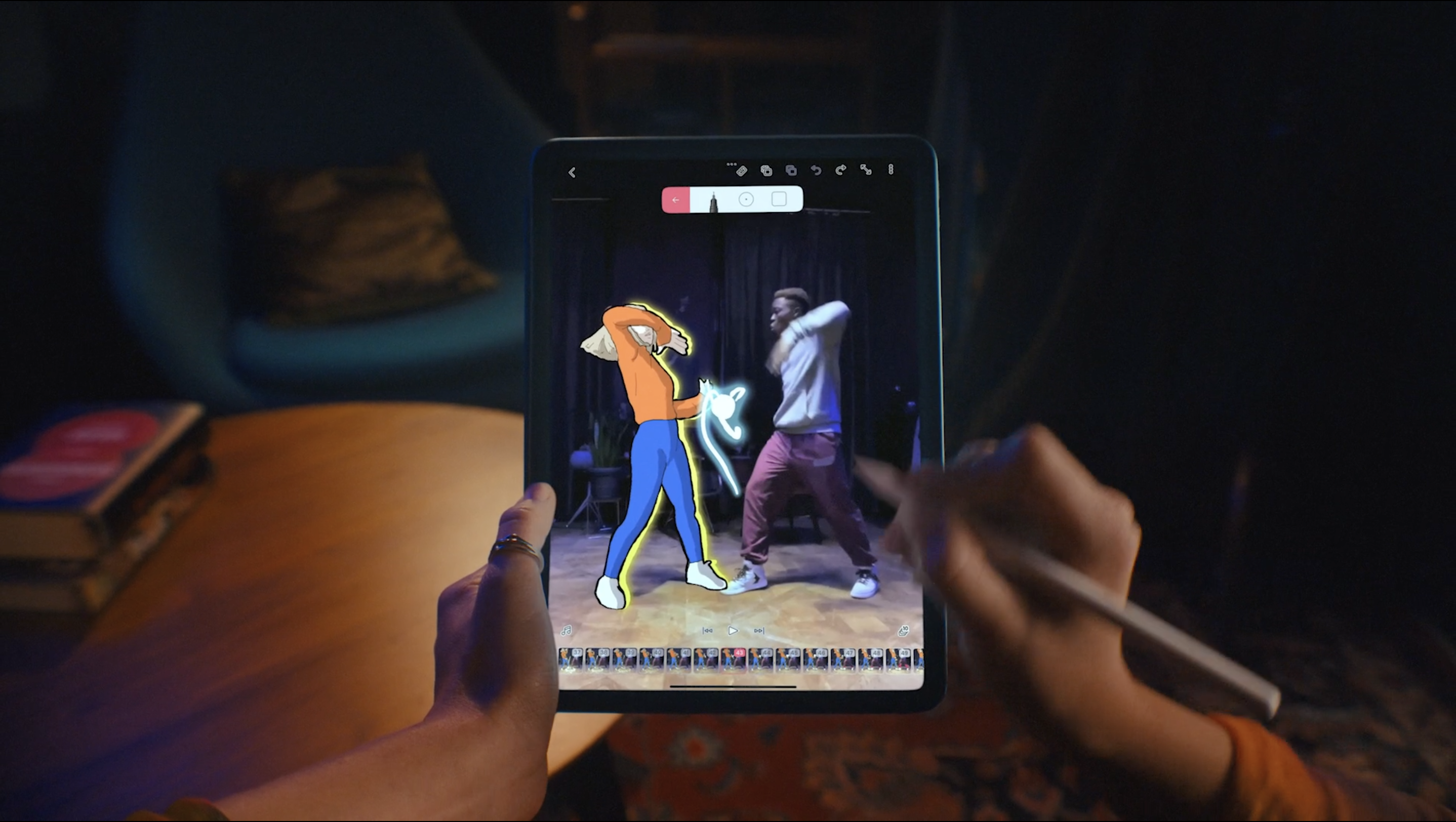
For those interested in numbers, the iPad Pro 11-inch netted a 7,293 score on the Geekbench 5 benchmark test, whereas the old 2020 iPad Air (with its weaker A14 Bionic chip) earned 4,262. In terms of video work, the iPad Pro was able to transcode a 4K video down to 1080p in 21.9 seconds, whereas the iPad Air 4 took 27.2 seconds to perform the same task.
So while the old Air is no slouch, an M1 injection should deliver some significant performance improvements, especially in terms of general speediness. But as we said, we’ll need to conduct proper tests to see how the new iPad Air 5 stacks up.
iPad Air 5 vs iPad Pro: Battery life
The 2020 iPad Air 4 is very power-efficient, lasting 10 hours and 29 minutes in our battery test. However it can’t match the longevity of the 11-inch iPad Pro, which lasted 13 hours and 42 minutes in the same test, making it one of the longest-lasting tablets we’ve ever tested.

Since the iPad Air 5 runs on the M1 chip and has a nearly identically-sized screen, it’s reasonable to assume its battery life will rival the iPad Pro’s. If that’s the case, then we can look forward to another Apple tablet that lasts all day.
iPad Air 5 vs iPad Pro: Cameras
The iPad Pro’s 12MP front and rear-facing cameras do an exceptional job of capturing high-quality videos and photos. The TrueDepth sensor on the front-facing camera and the Center Stage feature (which taps into the power of M1 to automatically adjust the frame and keep you centered as you move during video calls) impressed us too.
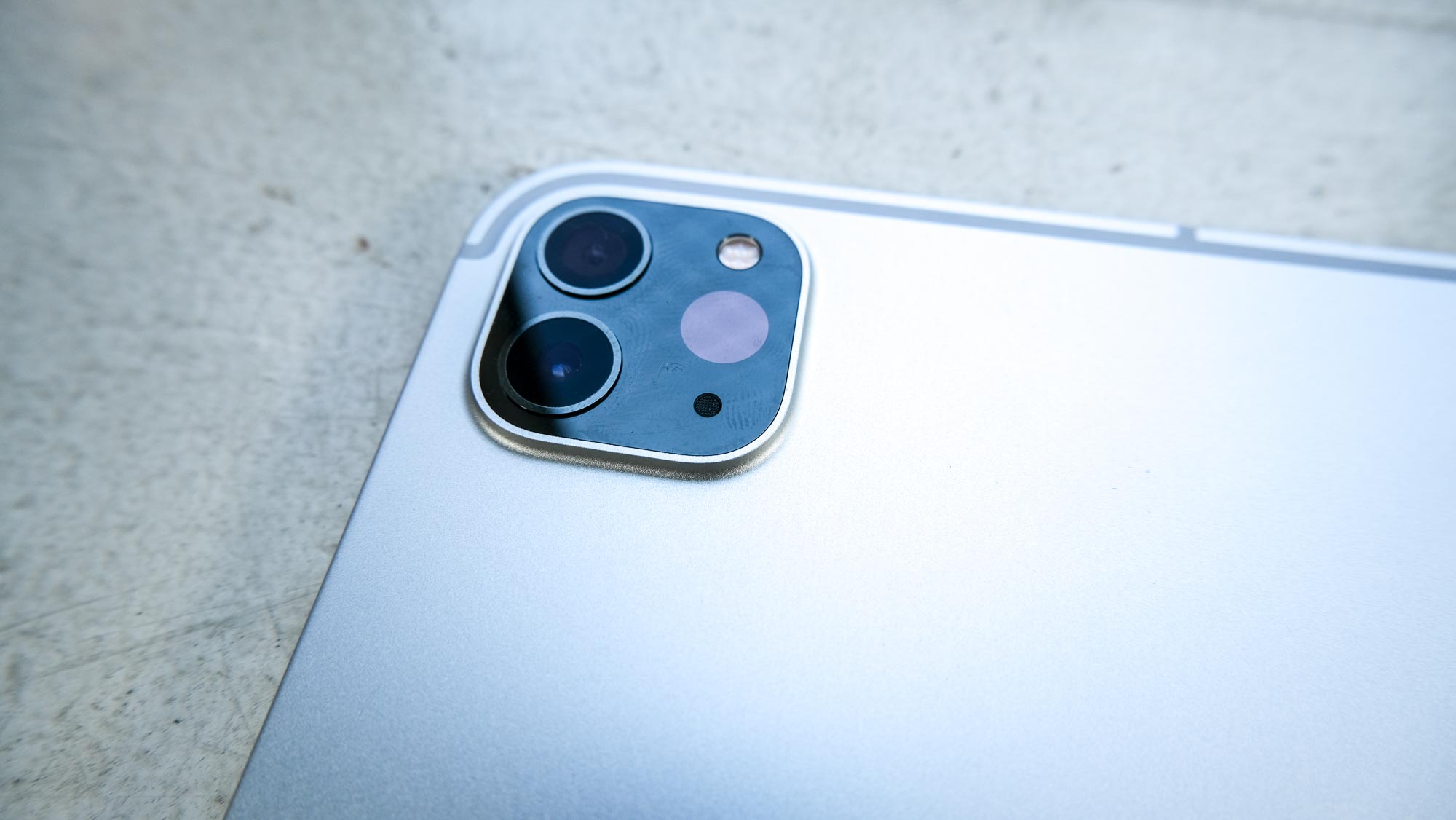
Center Stage will also be available on the iPad Air 5, which makes sense since it appears to require an M1 chip. This would have been a neat enough feature two years ago, but now it seems especially valuable given how many of us now communicate remotely via video calls on a regular basis.
Plus, the Air 5 is getting a camera upgrade over its predecessor. The front-facing camera goes from 7MP to 12MP ultra-wide, whereas the one on the rear remains a 12MP camera. That makes the new Air directly competitive with the 11-inch iPad Pro 2021, at least in terms of camera array.
However, we won’t know for sure how they compete until we try the iPad Air 5 and its cameras out for ourselves. Until then, it’s hard to say which tablet offers better camera options, though we can confidently say both are a bit unwieldy if you try to whip them out to capture a quick snapshot.
The iPad Air 5 edges close to being an iPad Pro alternative in terms of features, but it’s missing a few critical ones that may prevent it from outshining Apple’s 11-inch Pro.
Most notably, the new iPad Air has 5G connectivity, which is a welcome addition. Unfortunately, it doesn’t support 5G Ultra-Wideband. To that end, the tablet won’t be able to achieve 1GB/s download speeds. This is crucial to keep in mind if you’re thinking about purchasing the 5G configuration and prize fast downloads.

The iPad Air 5 also can’t match the smoothness of the 11-inch iPad Pro’s 120Hz ProMotion display. We loved the 120Hz refresh rate of the Pro since it makes scrolling and doodling on the screen feel smoother. It’s a shame the iPad Air 5 doesn’t support ProMotion.
Face ID isn’t available on the iPad Air 5 either, which is a letdown for those of us who like logging into devices with our face. You’ll have to make do with Touch ID just like with the iPad Air 4.
iPad Air 5 vs iPad Pro: Verdict
The iPad Air tablets have long played second fiddle to the iPad Pros. Now that the iPad Air 5 is packing the powerful M1 chip, it’s possible we’ll see things change as those who never paid the iPad Air much attention may decide to pick up the new slate over a pricier iPad Pro.
Some people could opt to buy the iPad Air 5 over the iPad Pro based on price alone. And that’s understandable. But, as we’ve seen during this face-off, the iPad Pro is still arguably the better Apple tablet. The iPad Air 5, as great as it appears, lacks features like ProMotion, FaceID and Ultra-Wideband 5G. It also offers less storage options than the iPad Pro.
Based on what we know, the iPad Pro is still Apple’s best tablet. Unless you’re on a tight budget, it’s probably better to spend a little extra for the iPad Pro. With that said, the 2022 iPad Air should be one of the year’s best tablets. From what we’ve seen, it has a high chance of ending up on our best tablets list alongside the iPad Pro. Though we think the latter is the better option, you won’t go wrong with either slate.
For all the latest Technology News Click Here
For the latest news and updates, follow us on Google News.
